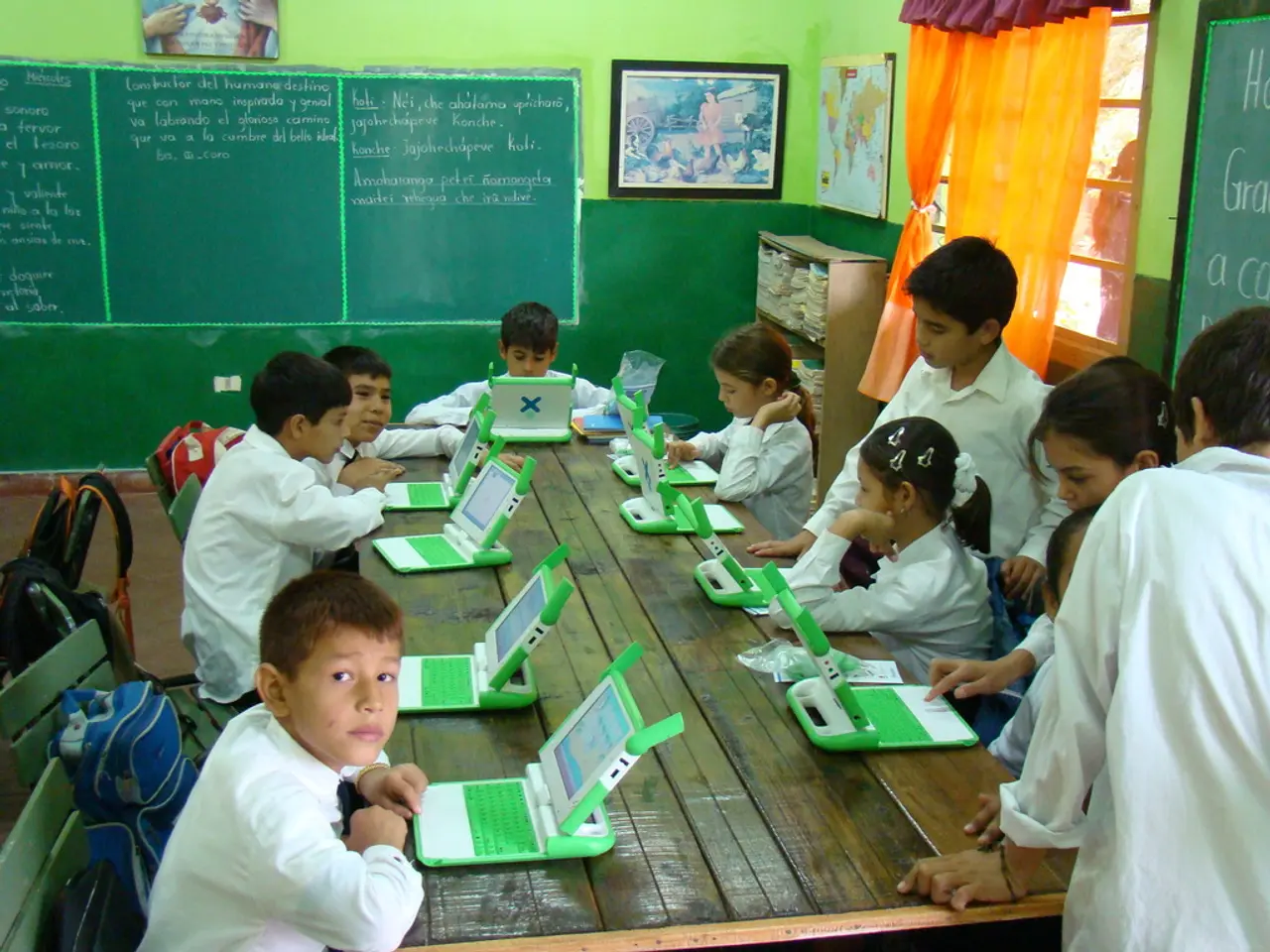Inside Perspective on the Education Technology Transformation
In the ever-evolving world of education, the use of technology has become an integral part of the learning process. A recent survey conducted by Bloxx has shed light on this transformation, particularly in the realm of Bring Your Own Device (BYOD) and social media.
Despite the risks associated with these technologies, only 17% of schools currently ban BYOD. Instead, a preferred strategy is the setting of policies around their use, as revealed by 31% of respondents. This dynamic approach, which prioritises education over static filtering, is seen as a positive step in a modern, IT-literate education system.
The importance of safeguarding internet users has been emphasised at key events such as the BETT education technology show and Safer Internet Day at the start of the year. The education sector is increasingly recognising the need for robust security systems, especially in light of the numerous security issues that have affected major companies over the past 12 months.
In January, a study by Bloxx aimed to understand measures and guidelines concerning BYOD and social media use in educational establishments. The study surveyed executives from various educational levels, including primary and secondary schools, district authorities, and higher educational institutes.
The study found that providing information in simplified language increased correct device usage among students and led to adjustments in BYOD communication to improve implementation based on school experience. Interestingly, approximately 41% of establishments without an acceptable usage policy for social media were looking to implement one.
However, basic web filtering, which is still employed by 71% of IT executives on BYOD devices, is no longer a viable option due to the power of the internet for research and presentation. Instead, more effective real-time web filtering is considered the most direct route to addressing these concerns.
The culture of education and the culture of the professional workplace differ in terms of security and safeguarding measures. While students in education are more likely to try to break free from online restrictions set by IT, given their greater technological knowledge compared to previous generations, the education sector is taking note of these potential issues and their potential impacts. There is a growing focus on risk mitigation.
IT security in schools and colleges needs to be more than just a list of blocked sites to keep students safe from inappropriate online content. Collaborative learning has seen the widespread adoption of BYOD and social media in educational establishments, but it also presents almost as many potential pitfalls as benefits, particularly with regards to the risks associated with social media.
In conclusion, the education sector is embracing technology, but with a keen awareness of the associated risks. A proactive implementation of new policies, enhanced by education rather than traditional web filters and blocking sites, is the key to navigating this digital landscape safely and effectively.





